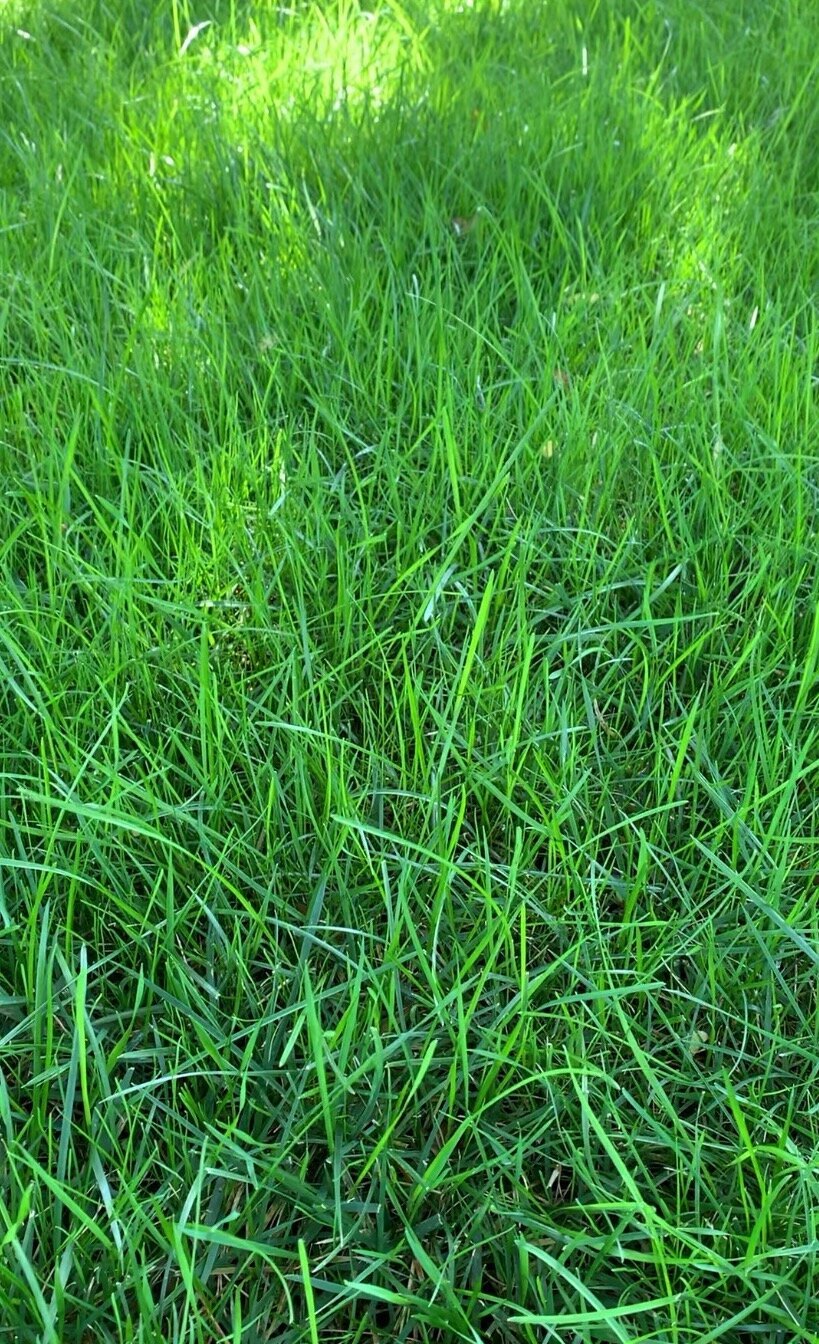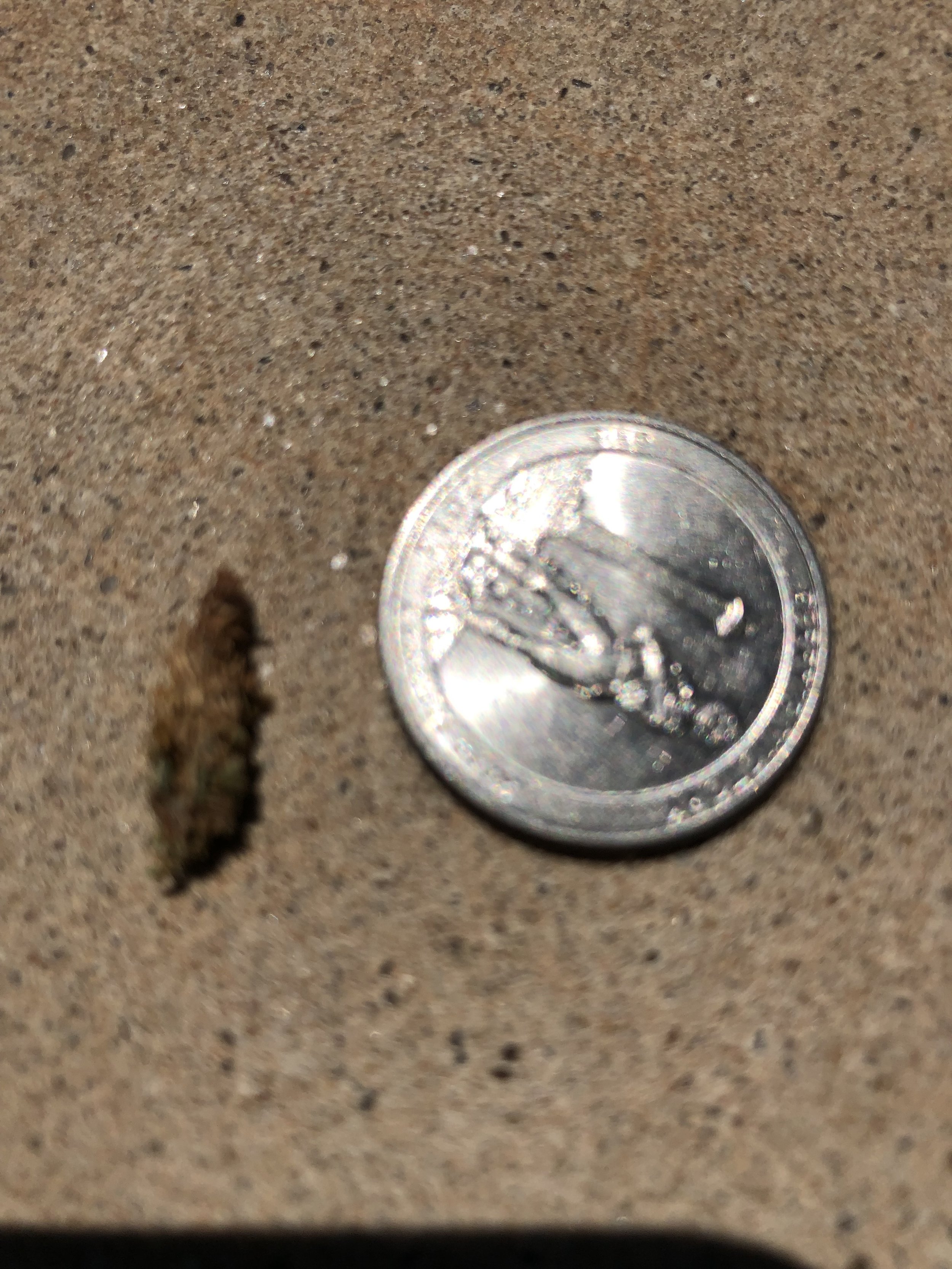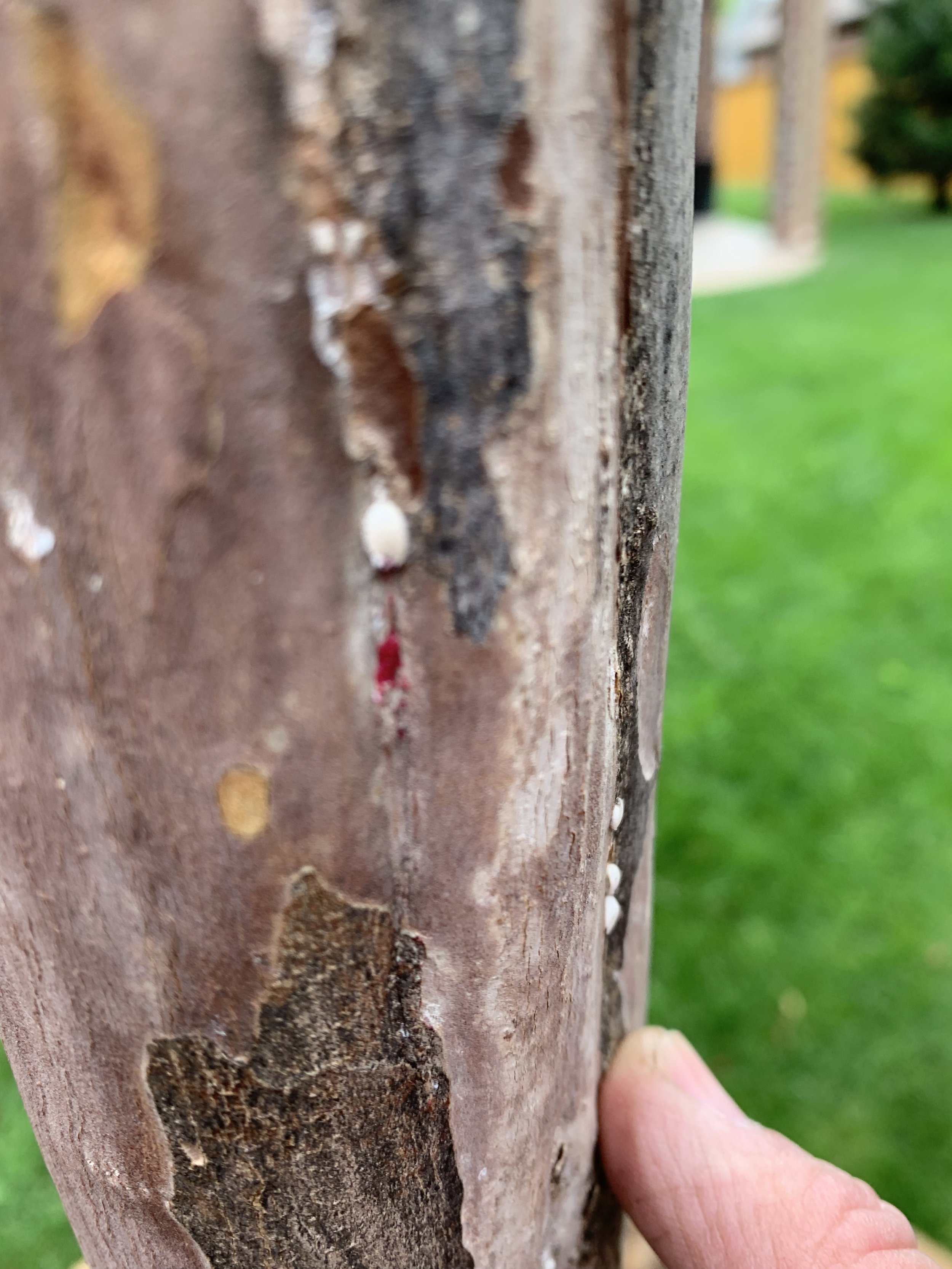
What’s bugging your landscape?
Wouldn’t it be nice if your landscape could tell you when something is bugging them?
If they could, there would be a whole lot of chatter out in the landscapes right now.
No two years are the same when it comes to battling insects and disease in the lawn and landscape. But one thing is consistent, when your landscape is under stress it is more susceptible to insect and disease problems.
The dryness of the last 30 days along with the above normal temperatures have brought added stress to your turf and plants resulting in more insect and disease pressure.
Here are a few of the problems that we are either currently seeing in landscapes or we have on our watch list:
The first generation of webworm started to show up in trees this week. Inspect your trees this weekend. The best control is to cut the branch out when they are small.
The webworm caterpillar weaves a loose web around tree branches to protect themselves while they are destroying your tree’s leaves.
WEBWORM
Timing – The first-generation spin webs in July and later generations create webs in September to October.
Caterpillars weave a loose web around tree branches while they are munching on the leaves.
Favorite trees include hickory, mulberry, oak, pecan, popular, redbud, sweetgum, and willow. But, you can find them on most ornamental shade trees when populations are heavy.
Early generations won’t cause long lasting damage. They are just unsightly. The last generation can cause damage when the branch tries to rebud just before a killing frost. When this occurs, you can expect the affected branch to die.
The best control is to cut out any affected branches in the early generations when the webbing is small. Completely dispose of the branch as the worms will exit the webbing and return to a tree. If the web is too high or if the population has increased to the point that pruning is not possible, an insecticide application will be needed. The spray must penetrate the webbing to gain control of the caterpillars. Dormant oil applications are a good idea as worms overwinter in tree bark.
Even though early populations do not cause damage, early control is important. When left untreated typically later generations’ populations increase.
Webworm caterpillars loosely weave webbing around branches to protect them while stripping a branch of leaves. When spraying, you mush have enough pressure to penetrate the webbing to gain control.
Bagworms produce silk threads to move locations.
BAGWORMS
Timing - Eggs hatch in May and they remain active through September.
½-2” long spindle shaped bag wrapped in the foliage of the host plant. Young bagworms are very hard to spot.
Favorite host plants are juniper, arborvitae, spruce, pine and cedar. But, they can attach themselves to deciduous shrubs and trees and we are seeing a lot of bagworms on deciduous trees this year!
Females lay eggs in bags left on plants over the winter. One female bagworm will lay as many as 500 eggs. The eggs hatch in the late spring and tiny larva crawls out and start feeding. As they feed, they use silk and plant materials to protect and camouflage themselves. Bagworms can strip a plant of foliage.
Heavy infestations, particularly on the same plant year after year, can completely defoliate a plant. Defoliation of needle evergreens, such as junipers and cedars, usually results in plant death. Broadleaf evergreens and deciduous plants typically are not killed but a weakened and more susceptible to other insect and disease problems.
When there are only a few, control is best by hand picking. If you have a large population an insecticide treatment should be made as soon as they are noticed. Try to remove any bags left on plant material in the fall. Bags left on the plant will serve as cocoons for females to lay more eggs. When removing bags, destroy them. Do not pick and toss on the ground as the worm will crawl back to a plant.
Bagworms use the leaves of the host plant to protect themselves while they feed. This bagworm came off an elm tree, not a typical host plant for the caterpillar.
Bagworms can strip a mature Bald Cypress of its leaves quicker than you would expect.
Although not as common bagworms will feed on deciduous trees. If you notice skeletonized leaves, look close, most likely there are bagworms attacking the tree.
Young bagworms are small and can be hard to see. They wrap themselves in the plant needles making them hard to notice.
If you notice a juniper or cedar starting to loose color, inspect for bagworms.
Left untreated, large, heavy infestations of bagworms will kill mature trees and shrubs.
If there are not too many, the best way to control bagworms is to simply pull them off and throw them away. Don’t throw them on the ground, if you do they will crawl back onto the tree.
Aphids are small and often go unnoticed but the sticky substance they leave behind is easy to spot.
APHIDS
Timing – Species start producing in April and increase rapidly as temperatures increase.
A small, soft-bodied insect that is nearly invisible to the naked eye. The honeydew, sticky substance they excrete is the easiest way to know aphids are active. Colonies develop on the underside of the leaf and often are not noticed until the sticky substance starts to show.
They feed on the leaves, stems and buds of a wide variety of plants throughout the growing season. Usually, they attack the succulent new growth.
Aphids generally do not cause serious harm to mature plants, although they can be harmful to young plants. Heavy populations can cause wilt and yellowing of leaves as the sap is removed. Blooming trees and shrubs will see a reduction in flowers. Aphids can promote sooty mold, a fungal disease, and spread viruses.
Early detection is the key. Aphids mature in 7-10 days and can produce 40-60 offspring resulting in population explosions in the thousands within a few weeks.
When populations are small, a high-pressure blast of water can be used to wash the insects off the leaves. Wiping the leaves with a soapy solution is also effective with early detection. In most cases, once you notice the honeydew, it is best to treat with an insecticide. A dormant oil application in the winter is helpful in reducing populations the following season. Lady bugs can be used as a beneficial insect control when populations are small.
Aphids feed on the underside of the leaf and become noticeable as the leaf becomes covered with the sticky substance they excrete.
SPIDER MITES
Timing – They are active from early summer through fall. The hotter and dryer the weather, the more severe the problem will become.
Very small (1/60 of an inch) that live on the underside of leaves and survive by sucking on the cell content of the leaves. First shows up as stippling of light dots on the leaves. Leaves then turn from bronze, to yellow, and then fall off.
They get their name from the small silk protective webs they create.
Because spider mite damage can look like many other plant problems, the best way to determine if it is spider mite is to shake the plant leaves over a white sheet of paper. Spider mites will look like tiny moving black dots on the paper.
Spider mites reproduce rapidly when conditions are perfect. Spider mites can hatch in as little as 3 days and become mature within 5 days. One female can lay up to 20 eggs per day during their 2-4 week life span.
The best control results from making two applications 7-10 days apart.
Adequate plant moisture during the hottest time of the year helps prevent population explosions.
Early signs of spider mites.
To know if you have spider mites shake leaves over a white sheet of paper.
Spider mites will look like tiny moving black dots.
Silk protective webbing formed by the spider mite.
White scale attacks Crape Myrtles leaving a black sooty substance on the bark.
Crape Myrtle Scale
Timing – Females lay eggs from May through September. Crawlers emerge within a day or two and spread to new areas of the plant.
The scale is white to gray and exudes a pink blood-like liquid when crushed. Initially, you will notice a black sooty mold on the twigs and trunks of crape myrtles.
Bark scale is difficult to control without the use of a systemic insecticide to kill the sucking pests.
Inspect new plants for scale before purchasing.
Scrubbing the bark with a soft brush and mild solution of dishwashing soap and water will remove many of the females and eggs as well as remove the black sooty mold.
A dormant oil application in the late winter to early spring is an effective way to reduce scale populations.
SOFT OAK SCALE
Timing – One generation per year. Crawlers emerge in June, feeding and spreading on the branches.
They are convex in shape resembling a helmet, brown and ¼” in size. Crawlers are small and pale in color.
Scale feed on the fluids in the vascular system.
They produce honeydew which is a source for mold and attract ants and other insects.
They rarely kill the tree but open up wood wounds that provide entry for other damaging pathogens.
When populations are allowed to increase, canopy damage may occur along with discoloration of the leaves.
Application of an insecticide via spraying needs to occur in June when the crawlers are active. Annual spray applications in June are required until the populations are under control.
An alternative treatment is trunk injections of a systemic insecticide. Trunk injections allow the insecticide to be readily distributed throughout the plant’s vascular system to the fluids the scales feed on.
Soft Scale are small brown convex shaped insects on oak tree branches.
ARMY WORMS
Timing – Moths migrate from the Gulf Coast in June, lay eggs and the first-generation caterpillars start feeding in July. With a 28-day life cycle there can be 4 or 5 generations between July and November.
Army worms are always present in our summer lawns and landscapes. When populations are normal you may never know they are there. But, when conditions are right, as they were in 2021, we can see an explosion and experience turf damage.
Early caterpillars are green and very small. As they grow to 1 to 1 ½” they turn browner with reddish brown stripes on each side of the body and small back spots on the top. Their distinctive mark is an inverted “Y” on the front of the head.
Army worms will feed on any leafy, soft plant with plenty of moisture in the leaf. In 2021 they feasted primarily on fescue lawns because growing conditions were perfect for fescue. In previous outbreaks, army worms picked bermuda over fescue. If army worms are high in populations this summer, you can expect them to choose bermuda over fescue because the early summer heat has kept fescue from flourishing.
Watch for areas of the lawn that appear to have drought stress should not be. Test the area with a soap flush. Mix 1 teaspoon of dish soap with 1 gallon of water and pour over the surface. If you have army worms, they will come to the surface.
Treatment with a systemic insecticide when the worms are small before they become heavy feeders is best.
Can you count the number of army worms in this picture from August ‘21?
If you have areas in your lawn that are turning brown you can test for army worms by drenching the area with soapy water. If there are army worms present they will immediately come to the surface.
Army worms are present every year but in numbers that don’t usually cause turf damage. August ‘21 army worm populations were high enough they devastated areas of lawns in just a couple of days.
Healthy landscapes are a result of an Integrated Pest Management program.
The first step of an IPM approach is maintaining healthy plant material with proper watering, feeding and pruning. Insect activity increases on plant material that is already stressed.
The second step is simply monitoring your plants. Weekly observation is critically important. Does the overall plant color look healthy? How do the leaves look?
Our landscapes represent large investments in both time and money. They add curb appeal and provide enormous benefits to the environment. It is important that we do all we can to keep them healthy and growing.
The best way you can protect your investment is to take a few minutes each week to inspect your lawn, shrubs, trees and flowers.
Complete control is much easier when insects are noticed early while populations are small.
Please let us know if you have any questions or concerns about your lawn and landscape.
Lorne Hall
Hall | Stewart Lawn + Landscape
(405)367-3873



























